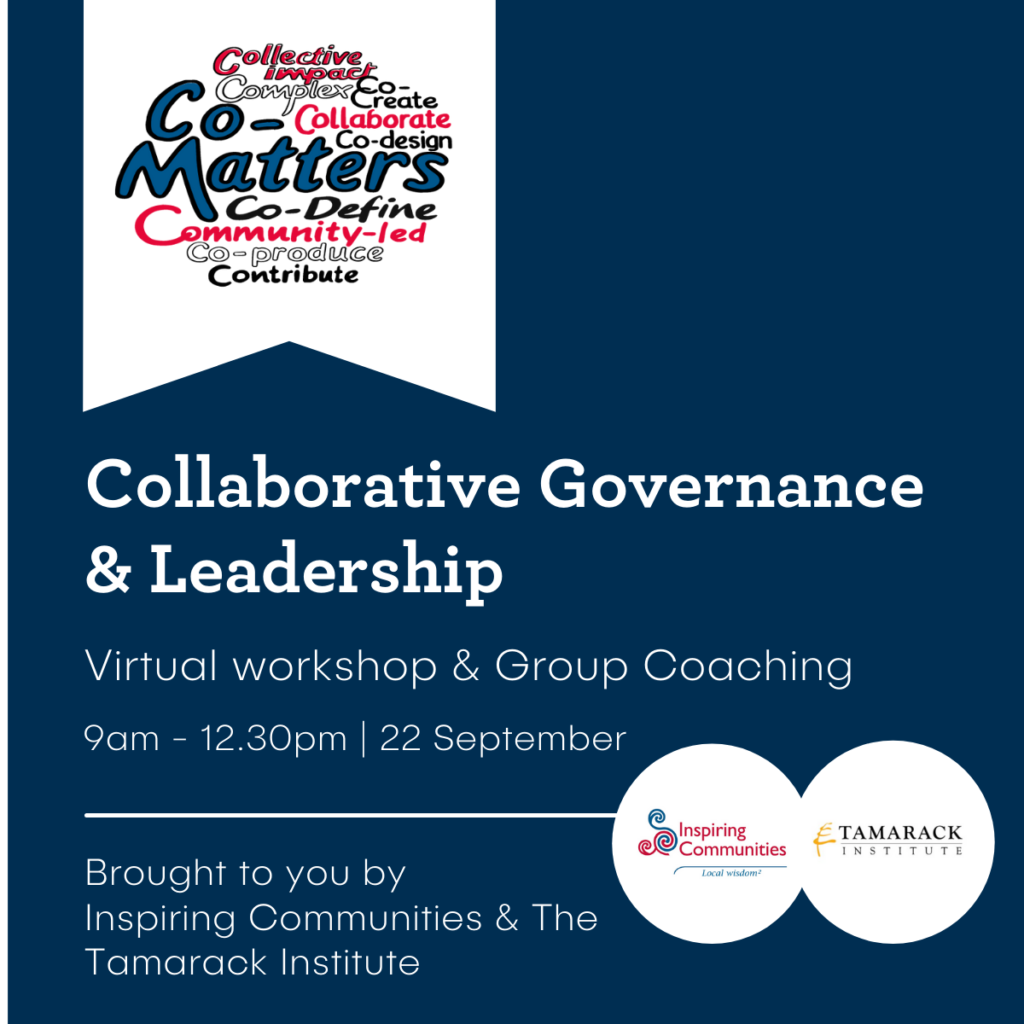




Evolving Collaborative Governance – by Megan Courtney
Earlier this year, Powerdigm, Inspiring Communities' consultancy arm, supported a developmental review of the Predator Free 2050 national collaborative process. Listening and learning from the experiences of 50 people from over 30 organisations was illuminating, with collaborative governance one of the key topics of conversation.

I agree with Liz Weaver when she says that “a lot is written about collaboration and collaborative work but relatively little that identifies the nuts and bolts of collaborative governance.”
I suspect it’s because we’re still in a place of evolving what happens next in this space what that needs to look like. This is essential as our traditional forms and understanding of governance do not easily lend themselves to the diverse collaborative and/or community-led contexts we’re all increasingly working in.
I’m wondering if it’s actually time to let go of the word governance altogether? Not that it’s wrong or bad but I think governance, even when you add ‘collaborative’ in front of it, comes with baggage and assumptions about centralised power, decision making and overall responsibility”
In practice, these aspects can so easily undermine other key ingredients of effective community-led change we understand to be critical – distributed leadership, shared ownership, active participation, democratic empowerment, decentralised action, movement building and real-time iteration and adaptation.
Given the hugely diverse range of collaborative working arrangements emerging as different groups, sectors, organisations and communities come together, it’s not surprising that things are in flux. This context requires us to be open to adapting ideas, concepts and practices from a number of sources to find the ‘best fit’. Just replicating others’ models has the potential to bring more risk than add value.
I’ve always been an advocate for doing things with others, and as things grow, then work out what you need to do next with enough structure and form to hold, rather than control things – context, purpose, relationships, values and function must lead form in my book. While I’m an obvious fan of more lightweight structured, constellation-type governance models, they’re also not the answer for every situation.
Here in Aotearoa, honouring Te Tiriti is also challenging us to innovate and find new ways of enabling and embedding both co-governance AND Te Ao Māori within collaborative efforts. This could take us beyond current existing practices of two house models and having dedicated tangata whenua seats on steering and working groups. Some of the resulting challenges experienced by Māori are well articulated below:
Every group has tried to embed Te Tiriti and Te Ao Māori. They have all have struggled and looked to the kaitiakitanga group for help. But we are still working under the same old model, e.g. let’s have one or two Māori in the group and hope that they can do it. A lot of Māori are getting frustrated with that same old process of being asked to bring the Māori lens…Māori on these groups end up operating across three spaces. The Māori worldview expert, the subject matter expert (in a Pākehā world), then the 3rd space is an education one – you sit in a wider group, you’re expected to advocate for Māori, act in your specialist area, and educate everyone else about Te Ao Māori.”
-Participant in PF 2050 National Collaboration Developmental Review, May 2021; page 29
This is clearly a critical emerging space here in Aotearoa and one in which I suspect we will need to keep learning from our doing for some time to come yet.
I look forward to joining my Tamarack colleague Liz Weaver to explore new thinking, examples and emerging challenges associated with collective leadership and governance online on September 22nd 9am -12.30pm . Hope you can join us!
